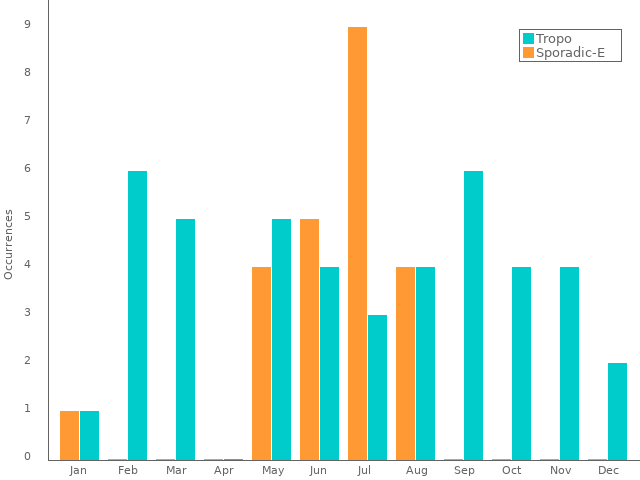Friday 10 June, 2022, 08:51 - Broadcasting, Licensed, Radio Randomness, Spectrum Management
Posted by Administrator
Sporadic-E propagation is a topic which comes up relatively regularly here at Wireless Waffle. This increadible mode of propagation enables reception of radio signals, typically in the range 25 to 150 MHz, over very large distances - at least distances that are very large for those types of frequencies. Distances of up to 2000 km (1250 miles) are possible and, for example, distant FM radio stations can be received as strongly as local ones - sometimes so strong that they wipe-out the reception of the local stations. Posted by Administrator
Various articles exploring this unusual mode of propagation have graced these pages over the years, however as part of updating the FM DX Logbook a new analysis has been added. This takes the form of a bar-chart showing in which month Sporadic-E and Tropospheric propagation has caused reception of distant FM radio stations.
A number of publications state that Sporadic-E propagation tends to occur primarily in the summer months, and sometimes in the winter. Conversely, tropospheric propagation can occur at any time of the year. To test this hypothesis, the FM DX Logbook now produces a graph showing the month in which each of the logging took place.

So far the results support the hypothesis with Sporadic-E propogation occuring in January and then between May and July, with tropospheric propagation having been recorded throughout the year. Every time a logging is added to the page, the chart will be updated, so it will be interesting to see whether this pattern continues.
add comment
( 1612 views )
| permalink
| 



 ( 2.9 / 3817 )
( 2.9 / 3817 )




 ( 2.9 / 3817 )
( 2.9 / 3817 )

